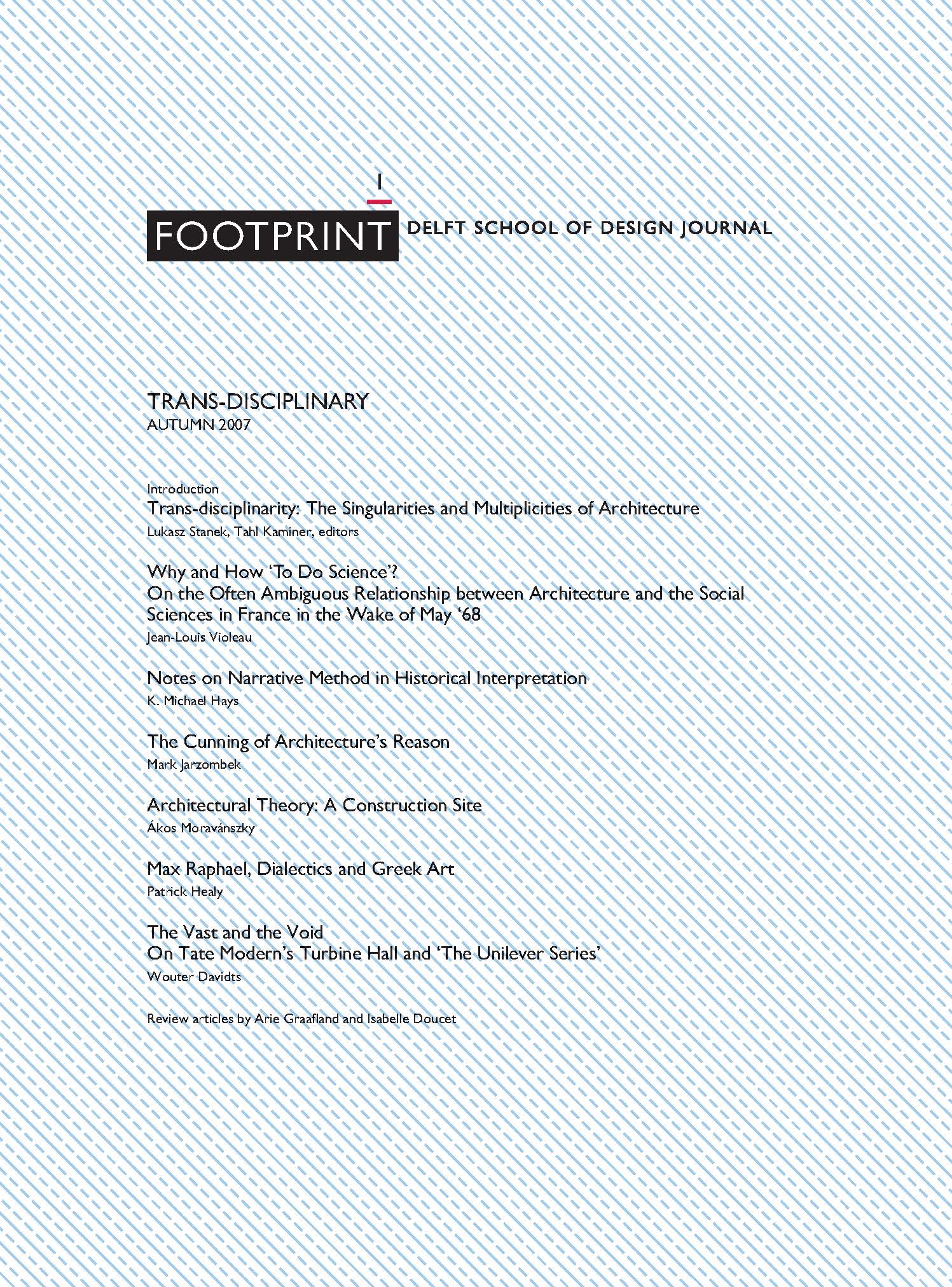Architectural Theory: A Construction Site
DOI:
https://doi.org/10.7480/footprint.1.1.667Abstract
Around 1968 we saw the birth of a new architectural theory as the conjunction of architectural history and politically engaged architectural criticism. Not the aesthetics of architecture, but architecture itself in its structural relations with social life became the focus of attention. As a result of this development, it is no longer possible to study architectural history without a critical reflection on the method of the study itself and without a grade of interdisciplinarity. Traditional methods of historiography and iconography have been replaced by new approaches configured by psychoanalysis, deconstruction, cultural studies etc. Appropriation has become the proof of criticality both in architectural theory and in design; however, the understanding of the concepts and methods of other disciplines is basically metaphorical. The problem for a school of architecture lies not in the ‘criticality’ of the kind of architectural theory we described as emerging from the spirit of 1968, but in its discursive nature. The disciplinary specificity of architecture resists a discursive approach, and architectural students frequently question the usefulness of theory which undermines the notion of the ‘project’, without articulating a constructive proposal. Projectivity does not seem to provide an answer; its claim of performativity lacks the program to regain its organising power over contributions from other specialised disciplines and practices. Theory should focus on the terms of our discipline, which are so close to our ‘core beliefs’ regarding architecture that we usually take their meaning for granted. It would be wrong to see this focus of theory as a withdrawal into the realm of language. Indeed, after a period of theory alienating architects and the general public, it could now create a rhetoric to influence our understanding of our environment, which is itself organised on the level of language. The requirement that theory should not be directly involved in design practice, but help students to grasp the underlying problems and their historic roots, will allow theory to exert its influence on design development.
Downloads
Published
Issue
Section
License
- Authors retain copyright and grant the journal right of first publication with the work simultaneously licensed under a Creative Commons Attribution License that allows others to share the work with an acknowledgement of the work's authorship and initial publication in this journal.
- Authors are able to enter into separate, additional contractual arrangements for the non-exclusive distribution of the journal's published version of the work (e.g., post it to an institutional repository or publish it in a book), with an acknowledgement of its initial publication in this journal.




